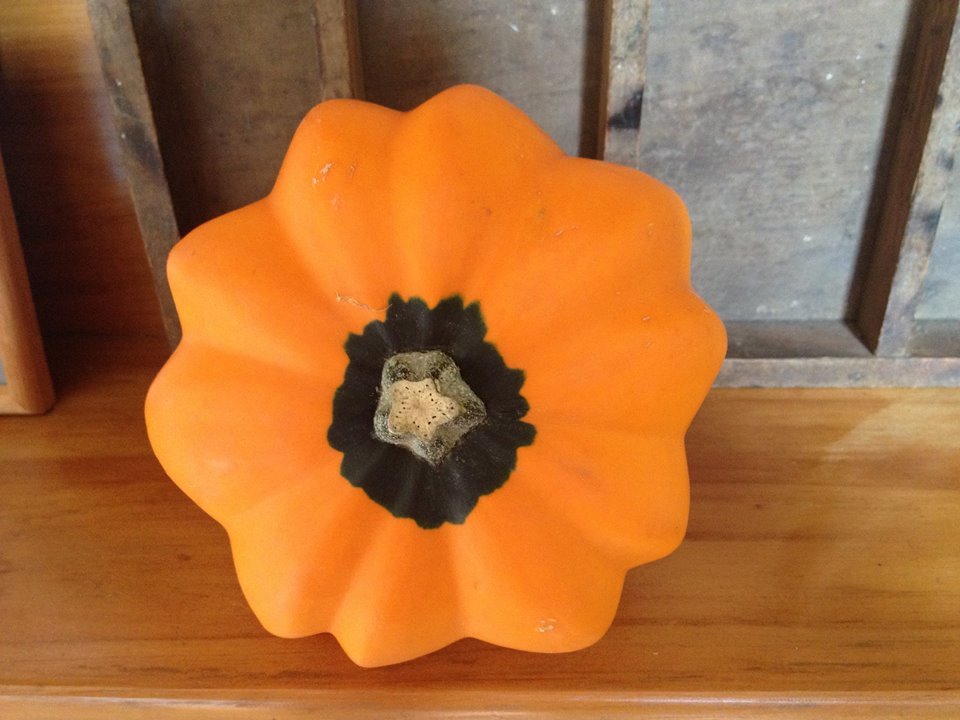Pain with menstrual bleeding or pain at other times of the menstrual cycle is unfortunately a common experience for females. Endometriosis is a gynecological condition often associated with severe pain. When diagnosed by laproscopy, endometriosis is also quite common with 1 in 10 females, or those assigned female at birth, experiencing the condition (RANZCOG, 2025). Complementary therapies like acupuncture, herbal medicine, naturopathy, and rongoā (traditional Māori medicine practices) are increasingly being used to help with menstrual pain and premenstrual tension, with diagnosed gynaecological conditions such as endometriosis, and to support optimal fertility. Current medical treatment approaches such as pharmaceutical pain relief, hormonal contraception medicines and devices, and surgery for endometriosis do not always provide relief from symptoms or treat the underlying pain and inflammatory response in the body.
Acupuncture and Chinese Herbal medicine are treatment approaches which focus on providing symptom relief for pain as well as addressing the chronic deep patterns in the body which create endometrial growth. Research shows acupuncture offers promising reduction in pain and improved quality of life when used as a regular treatment therapy (Giese, 2023). In this article, we will explore the way menstrual pain is biomedically categorised and what endometriosis is, the Chinese medicine perspective on menstrual pain, as well as how acupuncture and Chinese herbal medicine can help in the treatment of menstrual pain, endometriosis, regulating the menstrual cycle and hormonal patterns, and supporting fertility.
Types of Menstrual Pain
Menstrual pain is known medically as dysmennorhrea, and is classified into two types: Primary Dysmennorhrea and Secondary Dysmennorhrea
Primary Dysmennorhrea
Commonly described as menstrual related pain in the pelvis, lower back or abdomen occurring just before or during bleeding onset and lasting around 8–72 hours. Onset of primary dysmennorhrea is often described as occurring at the onset of menarche or 6 – 12 months later (Christensen, 2024)
Secondary Dysmennorhrea
Menstrual related pain which is considered to be due to a pelvic pathology (e.g. endometriosis, fibroids, pelvic inflammatory disease). Often secondary dysmennorhea is expressed or diagnosed later in chronological age compared with primary dysmennorhrea, however it can occur at any stage in a persons menstruating life (Christensen, 2024).
What is Endometriosis?
Endometriosis is a condition defined as endometrial tissue growing outside the uterus. Laproscopy is commonly used as a method of diagnosis, however other diagnostic measures such as ultrasound, magnetic resonance imaging, or histopathology may also be used. It is most commonly diagnosed in females around the age of 30, or in their early 30’s (RANZCOG, 2025), yet many experience the symptoms of endometriosis for sometime in their 20’s before diagnosis occurs. Common symptoms include: menstrual bleeding pain (dysmennorhrea), pain at other times in the menstrual cycle (non-cyclical pelvic pain), nausea and vomiting, bloating and digestive discomfort particularly around the bleeding time or during ovulation if there is endometrial tissue or cysts growing near the ovaries, dizziness, fatigue, headaches or migraines. The quality of pain can be experienced as sharp, stabbing fixed pain, or mild discomfort in the lower abdomen that feels vague and comes and goes. Typically with a diagnosis of endometriosis the pain can be debilitating, and there can also be a high tolerance for pain alongside this. Another defining characteristic of endometriosis is low-grade inflammation in the pelvis with associated increased fluid, macrophages and other inflammatory secretions such as prostaglandins, proteolytic enzymes and cytokines (Lyttelton, 2013). Endometrial tissue may lie superficially on the surface of the tissue membranes or it may penetrate deeper into the membranes of the pelvic cavity and organs (Lyttelton, 2013). There are different types of endometrial tissue that can form:
1. Brown or pigmented endometriosis
2. Chocolate cysts
3. Pale pink or white non-pigmented endometriosis
Endometriosis can also occur alongside other gynaecological conditions such as polycystic ovary syndrome, pelvic inflammatory disease, fibriods, polyps, fallopian tube blockage, premenstrual dysphoric disorder.
Poor access to care and effective treatment
There is currently a crisis in access to gyaenecological services here in Aotearoa-NZ (RANZCOG, 2025). Part of the strain on gyaenecological services is due to resources and staff being allocated for maternity care which is under-resourced and encountering increasingly complex health care needs, with growing incidence of emergency cesarean sections and other high risk medical interventions such as induction during labour and birth.
“Women with conditions such as endometriosis, incontinence, and prolapse— serious conditions that significantly impact quality of life and the ability to work—are being left to languish on waiting lists whilst their conditions worsen,” says Dr Gillian Gibson, RANZCOG President.” (RANZCOG, 2025)
Acupuncture for Endometriosis
A recent systematic review and meta-analysis research study found that acupuncture was associated with clinically relevant improvements in pelvic pain associated with endometriosis, with reductions in VAS scores for pain of greater than 20 percent when acupuncture was compared with usual care or sham acupuncture (Giese, 2023). Similar improvements in quality of life were also seen (Giese, 2023). Acupuncture has long been understood as an effective treatment for pain in the body and accumulating scientific research is showing this to be the case for a range of conditions involving pain (Russel and Hopper Koppelman, 2017). For more summary information on the evidence of acupuncture for a range of health conditions and pain you can find this at Evidence Based Acupuncture.
Chinese Medicine Perspective on Menstrual Pain
In Chinese medicine pain is a sign of stagnation of qi (life force energy), and is often accompanied by a stagnation of blood and fluids in the body.
Lack of warmth circulating in the body
In particular, endometriosis is commonly seen in females where there is a pattern of stagnation of blood and qi in the womb and a deficiency of Kidney yang qi. Kidney yang qi is associated with the reproductive/sexual energy which creates warmth and feelings of power in the body. When the Kidney yang qi is not sufficient, there are associated symptoms such as: low basal body temperature, a general sensitivity to cold in the body and particularly a lack of warmth in the lower back, buttocks, hands and feet, as well as tendency towards lower levels of progesterone. Alongside the general lack of warmth in the body, the inflammatory response of endometrial tissue growth and stagnation of the smooth flow of blood in the body, may eventually create localised heat in the womb and pelvic region. For more information about the Kidneys in Chinese Medicine I have written a longer article on this.
Stagnation and counter-flow of blood
With endometriosis the flow of blood typically has a stagnating or counter-flow movement, i.e. instead of the blood moving out of the womb with the onset of bleeding, it stays stuck inside or moves upwards in the pelvic cavity or even higher into the diaphragm. Alongside the dominant symptom of pain in the womb lower abdominal or back, this counter-flow movement of blood can give rise to other symptoms such as pain higher up in the chest, stomach, breasts, bleed from the nose, blood not emptying completely with the bleeding period (signs of elevated basal body temperature in the bleeding and follicular phase can also show this), period acne, sudden and erratic changes in mood pre-menstrually or with bleeding.
Feelings of Powerlessness and the Emotion of Anger
There can be challenges in emotional expression and feelings of powerlessness. Particularly feelings of anger (rage, self-hate, irritation, frustration e.t.c) and the bodies fight response may be thwarted in it’s natural expression, or natural cycle of complete resolution. There can be a tendency towards the internalisation of feeling states such as rage, anger, irritation, frustration e.t.c. This difficulty in feeling anger or allowing anger to move in the body tends to cause heat to be remain localised in the vagina and womb, and in the neck, throat and head, giving rise to heat conditions which erupt at the skin level e.g. boils, or acne. An incomplete nervous system fight response is often a very early pattern in the body which is shaped by the conditions of our inutero and birth experience emerging from our mothers womb, our early years of life as we experience our ‘Mars return’ around 2.5 years of age and begin to experience our will power, our need for freedom and independence. If we are not allowed to experience our anger, rage, or need for freedom in a safe way through our caregiver(s) awareness of their own powerful presence, through for example play fighting and our caregivers mirroring of our emotion, this can create the context for the development of a nervous system response in our body that is experienced as an incomplete fight response and the emotions of anger and rage suppressed and eventually turned inwards upon the self which becomes a subconscious patterning. As we grow into childhood and adulthood this patterning in the body, is reinforced in environments where we feel our voice or power is repressed or oppressed by authority figures, or authoritarian structures in families, educational or community settings.
Chinese Herbal Medicine for Endometriosis
In my clinical experience as a Chinese medicine herbal medicine practitioner and acupuncturist, Chinese herbal medicine offers enhanced treatment outcomes alongside acupuncture for pelvic related conditions such as endometriosis, and in conditions where fertility is compromised due to emotional stress or deficiencies in ‘vital substances’. In Chinese medicine these vital substances are called qi – ‘life-force energy’, blood, and jing – ‘reproductive essence’). From a biomedical perspective a deficiency of these vital substances in the body impact particularly the health of the reproductive system, including the health of the thyroid and the hypothalamus-pituitary-adrenal (HPA) axis. There are different Chinese medicine herbs and formulas used to treat the patterns which commonly occur with endometriosis, particularly Kidney yang deficiency and Blood Stasis in the Uterus (Lytellton, 2013). Alongside an acupuncture treatment, a herbal medicine prescription is often tailored for the individual, considering their individual constitution, other medications they may be taking, and receptivity to taking herbal medicine.
If you are experiencing menstrual pain, endometriosis, menstrual cycle challenges, other gynaecological conditions, or issues with fertility and would like to discuss acupuncture and Chinese medicine treatment options please feel free to get in touch.
About the Practitioner
Rose Skerten is a registered Acupuncturist and Chinese Medicine Practitioner with CMCNZ and Certified Healing Birth Practitioner. She specialises in Birth Trauma Therapy, pregnancy and postpartum acupuncture, acupuncture for fertility and hormonal support, acupuncture for mental health and chronic pain.
References
Christensen K. Dysmenorrhea: An update on primary healthcare management. Australian Journal of General Practice. Volume 53, Issue 1-2, January–February 2024. Accessed from: https://www1.racgp.org.au/ajgp/2024/january-february/dysmenorrhea Accessed 5 April 2025
Giese N, Kwon KK, Armour M. Acupuncture for endometriosis: A systematic review and meta-analysis. Integrative Medicine Research. 2023 Dec; 12(4):101003. Accessed from: https://pmc.ncbi.nlm.nih.gov/articles/PMC10682677/ Accessed 5 April 2025
Lyttleton J. Treatment of Infertility with Chinese Medicine. 2nd Ed. Sydney: Churchill Livingston Elsevier; 2013.
Russell, D. & Hopper Koppelman, M. (2017). Acupuncture For Pain. Evidence Based Acupuncture.
The Royal Australian and New Zealand College of Obstetricians and Gynaecologists (RANZCOG). RANZCOG Raises Alarm Over Crisis in Access to Gynaecological Care in Aotearoa New Zealand. 2 April 2025 Accessed from: https://ranzcog.edu.au/news/crisis-in-access-to-gynaecological-care-nz/ Accessed 5 April 2025
The Royal Australian and New Zealand College of Obstetricians and Gynaecologists (RANZCOG). Endometriosis clinical practice guideline. 13 March 2025 updated. Accessed from: https://ranzcog.edu.au/resources/endometriosis-clinical-practice-guideline/ Accessed 5 April 2025















